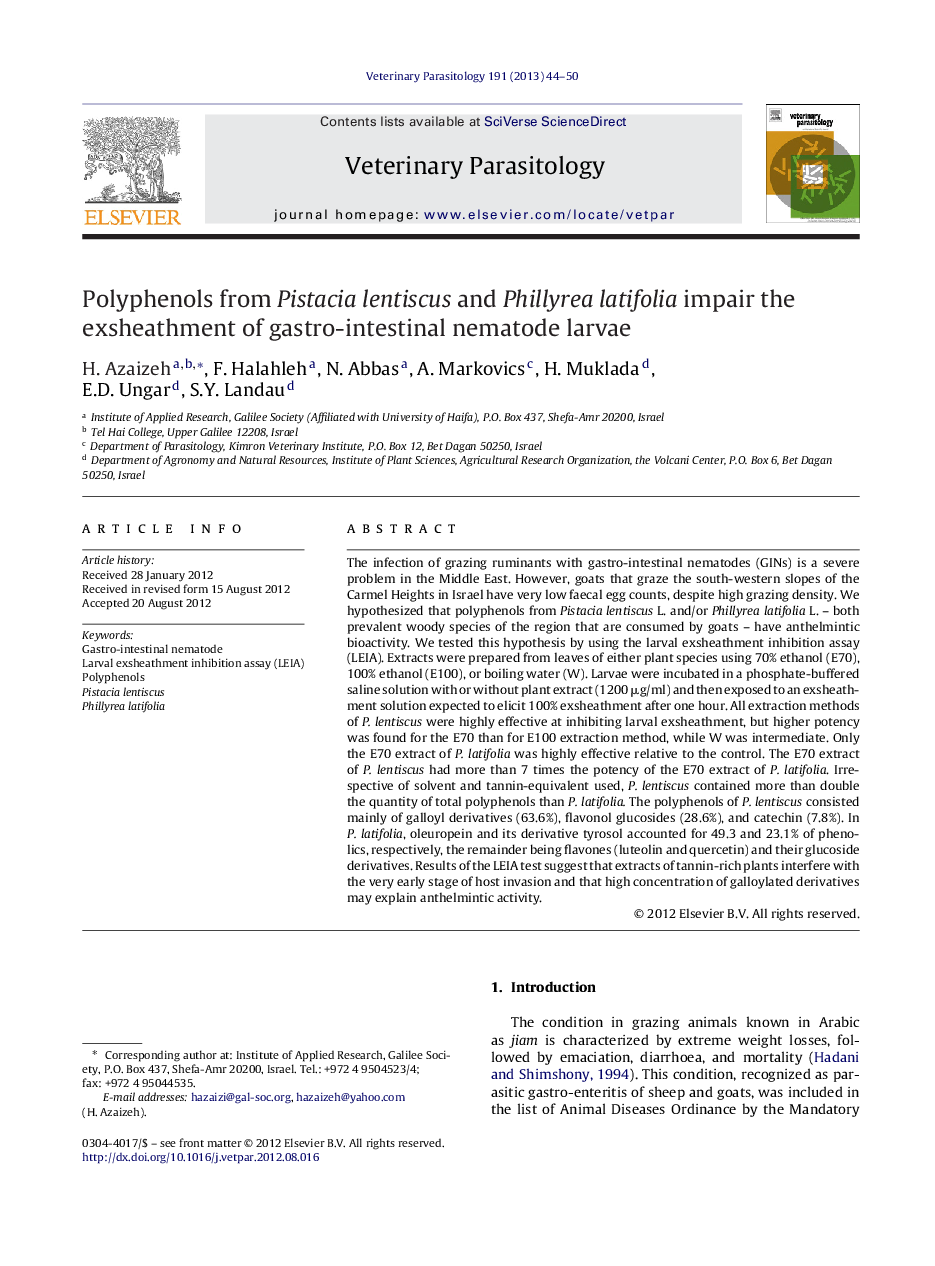| کد مقاله | کد نشریه | سال انتشار | مقاله انگلیسی | نسخه تمام متن |
|---|---|---|---|---|
| 5804374 | 1555706 | 2013 | 7 صفحه PDF | دانلود رایگان |

The infection of grazing ruminants with gastro-intestinal nematodes (GINs) is a severe problem in the Middle East. However, goats that graze the south-western slopes of the Carmel Heights in Israel have very low faecal egg counts, despite high grazing density. We hypothesized that polyphenols from Pistacia lentiscus L. and/or Phillyrea latifolia L. - both prevalent woody species of the region that are consumed by goats - have anthelmintic bioactivity. We tested this hypothesis by using the larval exsheathment inhibition assay (LEIA). Extracts were prepared from leaves of either plant species using 70% ethanol (E70), 100% ethanol (E100), or boiling water (W). Larvae were incubated in a phosphate-buffered saline solution with or without plant extract (1200 μg/ml) and then exposed to an exsheathment solution expected to elicit 100% exsheathment after one hour. All extraction methods of P. lentiscus were highly effective at inhibiting larval exsheathment, but higher potency was found for the E70 than for E100 extraction method, while W was intermediate. Only the E70 extract of P. latifolia was highly effective relative to the control. The E70 extract of P. lentiscus had more than 7 times the potency of the E70 extract of P. latifolia. Irrespective of solvent and tannin-equivalent used, P. lentiscus contained more than double the quantity of total polyphenols than P. latifolia. The polyphenols of P. lentiscus consisted mainly of galloyl derivatives (63.6%), flavonol glucosides (28.6%), and catechin (7.8%). In P. latifolia, oleuropein and its derivative tyrosol accounted for 49.3 and 23.1% of phenolics, respectively, the remainder being flavones (luteolin and quercetin) and their glucoside derivatives. Results of the LEIA test suggest that extracts of tannin-rich plants interfere with the very early stage of host invasion and that high concentration of galloylated derivatives may explain anthelmintic activity.
Journal: Veterinary Parasitology - Volume 191, Issues 1â2, 16 January 2013, Pages 44-50